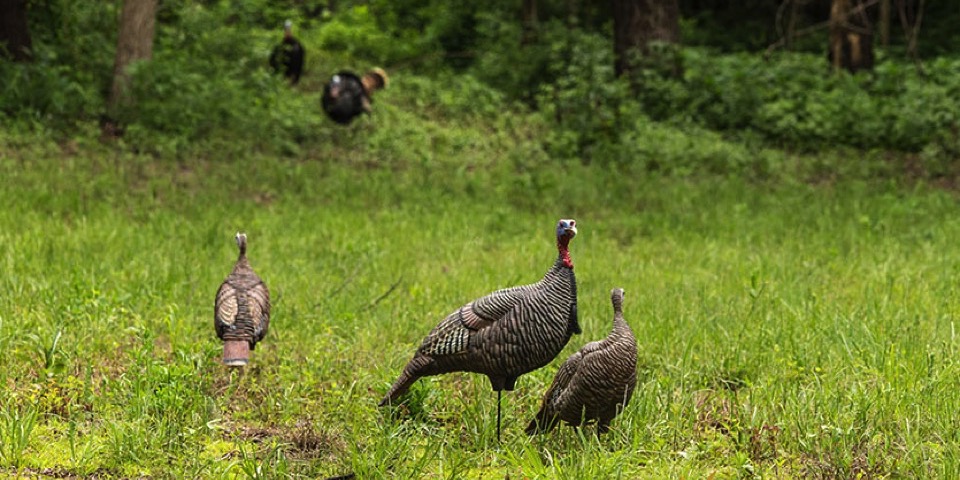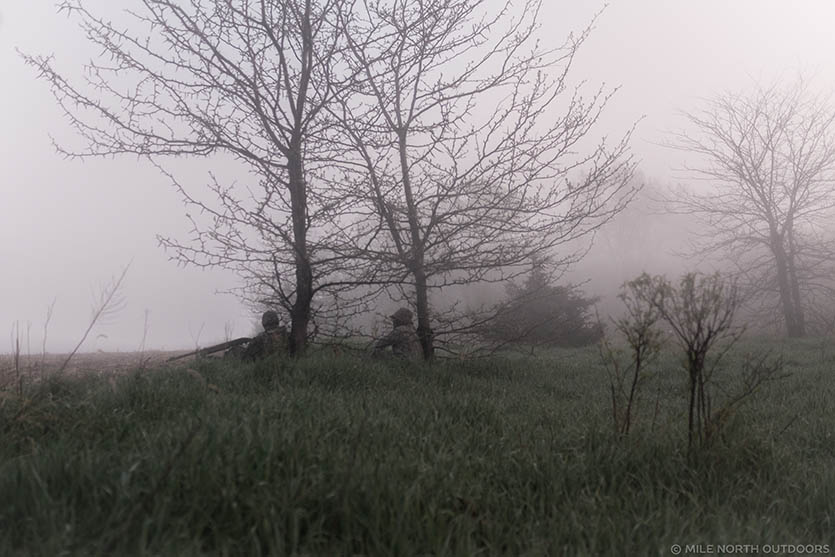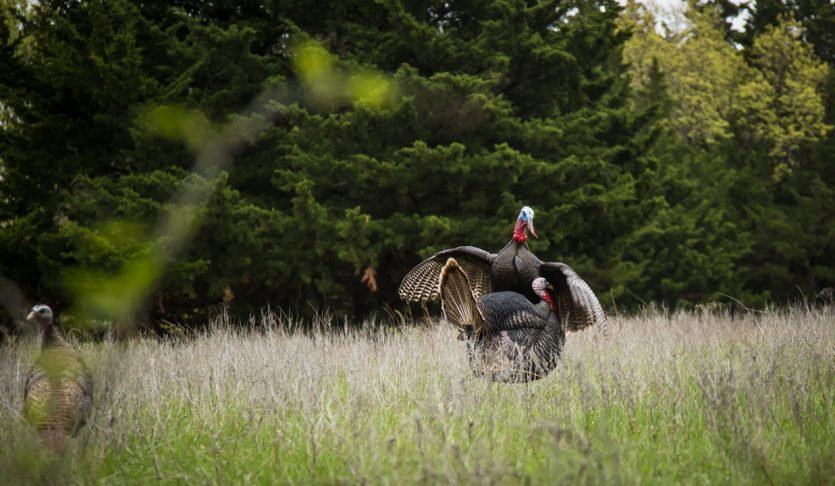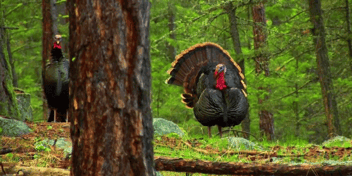
There is nothing—and I mean nothing—more difficult in all of the bird hunting than killing an educated eastern tom. If you haven’t turkey hunted for more than a decade, they’re smarter than you. No Joke. Spooky, cautious, and decoy shy, they love to hang up just out of shotgun range. I used to go seasons without killing one because the property I have access to is surrounded by some of the most die-hard (and seasoned) turkey men in the county. It’s as tough as it gets to jelly-head an eastern turkey here, but I’ve picked up some key tactics that have brought proven success year after year.
SCOUTING
It’s the most important aspect of killing an eastern turkey (or any game for that matter). Find the roost and watch birds fly up into the trees. Don’t set up any closer than 100 to 150 yards the next morning, but do try and set up on a path the birds have been traveling. Even if they shy away from the decoys, as pressured birds will, they still might walk close enough so you can get a shot off.

Photo courtesy of Dave Palmer/Mile North Outdoors
Approach
Where I hunt, the birds are scattered all over the property at first light, so until about 7 a.m., I walk around scratching the slate call, hoping to hear a tom gobble. After the morning rush, I head to a ground blind on the edge of a small bean patch, set two hen decoys and jake to the side—away from where I think the toms are going to come from. The reason? I want the gobblers to have a clear line to those hens for the second turkey whoopie session of the day. The key is to have a plan and stick to it. In my experience, eastern turkeys always come back to the same area unless they have been spooked or pressured. That’s why I always go back to the bean plot. It’s a place you’re going to hear gobbles and likely see a bird.
Calling
On tough eastern turkey, keep it light and intermittent. I’m not a champion mouth-caller by any means and haven’t had much luck late-season by getting aggressive. Just scratch your slate or glass every five or 10 minutes and be patient. Sometimes, I just shut up and won’t call for more than 20 minutes—mostly because I’m reading a book to pass the time—and believe me, mid-day you have a better chance of tagging out if you keep quiet. Light calling is fine, but most toms have henned up for a second time already and aren’t looking for love.

Photo Courtesy of Drew Palmer/Mile North Outdoors
Guns & Ammo
Short-barreled pumps like the Mossberg 500 Turkey are an excellent choice. I like the pistol grip for better stability and accuracy, plus it’s easy to carry. Some of my buddies who travel all over North America to chase thunder chickens love the 500 with a red-dot sight. I give them a hard time for using an optic to kill a bird that spends a majority of its life on the ground, but you will be surprised how accurate you become at longer ranges. Load-wise, Hevi-Metal Magnum Blend is deadly (they make an awesome reduced recoil version), and I’ve shot turkeys with Federal 3rd Degree and Winchester Longbeard. Just make sure you pattern the gun with whatever load you’re going to hunt with. It makes a difference.
What to Bring?
Invest in a good turkey vest with a butt and back pad. Sitting on the hard forest floor will wear on you after a few hours, and you want to be able to stick it out. Stick a screwdriver in your vest pocket. They’re good to have if you can’t get the decoy stake in the ground. Binoculars are a must-have. You can glass birds to see where they are traveling and roosting, plus they’re awesome for spotting pests like coyotes and crows you can go after on slow days.
About the Author




